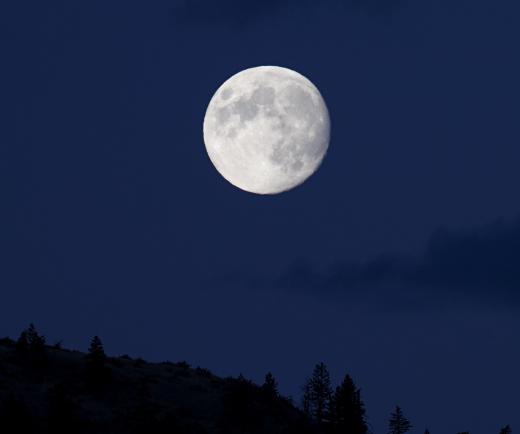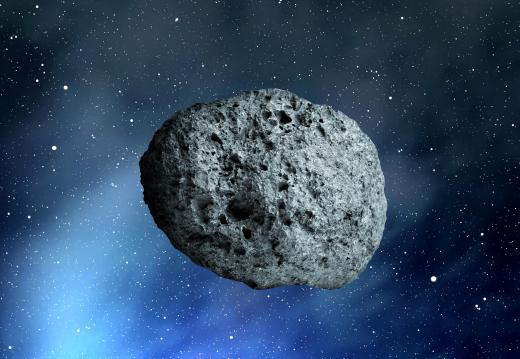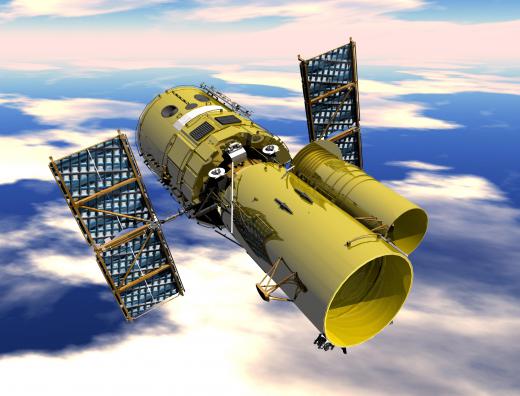What are the Largest Known Asteroids?
 Michael Anissimov
Michael Anissimov
The answer to this question depends on the definition of asteroid. If only objects within the asteroid belt between the orbit of Mars and Jupiter count, then the largest are Ceres, which is about 580 miles (930 km) across and considered a dwarf planet; Vesta, which has a diameter of around 326 miles (525 km); and Pallas, which is about 338 miles (544 km) across, but has less mass than Vesta. These comprise 32%, 9%, and 7% of the asteroid belt's total mass, respectively. If the definition is expanded to include all sub-planet, non-satellite objects in the solar system, including bodies beyond the orbit of Neptune, then the largest are Eris, another dwarf plant with a diameter around 1,445 miles (2,326 km); Pluto, which is about 1,433 miles (2,306 km) across; and Ceres, in that order. By comparison, the Earth has an average diameter of 7,917.5 miles (12,742 km).
To get an idea of the size of the largest asteroids, a person can consider the largest one known to have hit the Earth: it was only about 6 miles (10 km) in diameter. This impact, thought to have occurred about 2 billion years ago, is represented by the Vredefort Crater in South Africa. A similar impact represented by the Sudbury Structure in Canada is dated to 1.8 billion years ago. At the time, only microbes existed as life. The Wilkes Land crater under the East Antarctic ice sheet may signify an even larger impact.

There is one consensus among scientists: the impact of an object larger than 12 miles (20 km) in diameter would be likely to kill all complex life on Earth by blocking out the Sun, halting photosynthesis for years at a time, and causing runaway global cooling. Tens of thousands of cubic kilometers of crust would be instantaneously vaporized, spewing red-hot ejecta across a continent-sized area. The only survivors would be microbes, especially bacteria (extremophiles) and fungi.

Even the third-largest of the asteroids is more than 20 times larger than what is necessary to kill all multicellular life on Earth, if it made impact. Luckily, these objects are in stable orbits and extremely unlikely to cross paths with the planet.
Of the largest, only one has so far been visited by astronauts or space probes. The Dawn mission (launched in 2007) entered orbit around Vesta in July 2011 and left in September 2012, headed to Ceres. New Horizons (launched in 2006) will reach Pluto in 2015. Currently, the best telescopes only provide fuzzy pictures of these bodies, so scientists' knowledge about them is limited. Pluto is known to have a reddish tint, similar to Mars, while Ceres possesses mysterious white and dark spots (presumably craters) that appear and disappear over the years.

In the early history of the solar system, much larger asteroids were common. It is thought that the Moon was created when a Mars-sized object named Rhea formed in the same orbit as the Earth, eventually hitting it. The crust ejected from this impact formed the the Moon. This theory is well-supported because the composition of the Moon is similar to that of the Earth's crust.
AS FEATURED ON:
AS FEATURED ON:













Discussion Comments
@bythewell - It'll be interesting to see how we handle that. I've read stories where they drag smaller asteroids towards the Earth in order to mine them more effectively, and I've read stories in which they only mine the largest asteroids because there isn't an effective way of doing the smaller ones.
In another way it would be very good for us, because we do know for sure that huge extinction events have happened on Earth because of asteroid impact and if we had the technology available to detect and move them we wouldn't need to be worried about it happening in the future.
What I'm really hoping is that at some point we're going to find some kind of really valuable substance on the big asteroids, something that makes it worthwhile putting a lot of money into space travel so that we can exploit them.
Not only would this put more of our mining into space, on asteroids which don't have an ecosystem to be harmed, but it would also enable companies to start developing space travel in general. We know it's very likely that asteroids have things like water and metals and possibly even oil on them, since there's a theory that oil can be formed from non-biological processes.
If they could find a real payload up there, the huge amounts of money that are poured into mining down here could be funneled into making new technology for space exploration and that would be amazing.
It's actually kind of incredible that we spent such a long portion of time calling Pluto a planet, when Eris is actually larger than Pluto.
I think it was because Pluto is closer and it was discovered back when they were still looking for planets with more primitive means and weren't actually able to see how big it was.
There are probably even more little rocky plutoids like Pluto and Eris out there which we just aren't aware of at the moment. In fact, I've even heard the theory that it was one of these crashing into Earth a long time ago that helped to form the moon.
Post your comments